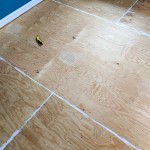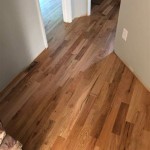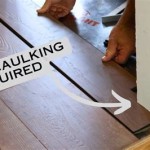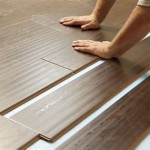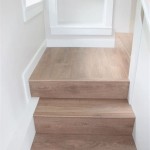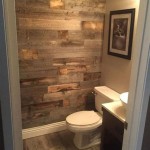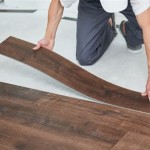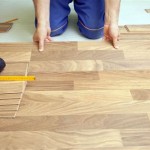Can You Put Lifeproof Flooring Directly On Concrete Walls and Ceiling?
Lifeproof flooring, known for its durability and water resistance, is a popular choice for many homeowners. But can you use it on more than just floors? The desire to create unique and functional spaces often leads to innovative uses of materials. This article will explore the feasibility of installing Lifeproof flooring directly on concrete walls and ceilings, analyzing the practical considerations and potential challenges involved.
Understanding Lifeproof Flooring and Concrete
Lifeproof flooring, a brand of luxury vinyl plank (LVP) flooring, is designed for high-traffic areas and comes in a variety of styles and finishes. It consists of a core layer, often composed of a rigid vinyl composite, providing structural stability and dimensional stability. The surface is treated with a protective layer that resists scratches, stains, and moisture. Concrete is a popular building material due to its strength, durability, and affordability. It is commonly used in walls and ceilings to provide structural support and a stable surface for finishes. However, concrete surfaces can be porous and susceptible to moisture absorption, which can affect the adhesion and longevity of flooring installations.
Factors to Consider for Wall and Ceiling Installation
While the idea of using Lifeproof flooring on walls and ceilings might seem appealing, several factors need to be considered before embarking on such a project. These include:
- Adhesion: Lifeproof flooring, like any other flooring, relies on proper adhesion to the substrate. Concrete surfaces can be challenging for adhesives due to their porosity and irregularities. Uneven surfaces can lead to gaps and delamination over time.
- Weight: Lifeproof flooring, while relatively lightweight compared to other flooring types, still adds weight to walls and ceilings. This weight needs to be accounted for during the installation process to ensure the integrity of the structure. Consulting a structural engineer is recommended for large-scale projects.
- Moisture Control: Concrete, especially in humid environments, can retain moisture. This moisture can affect the performance of the flooring, potentially leading to warping, buckling, or mold growth. Implementing proper moisture control measures is crucial, such as using a moisture barrier and ensuring adequate ventilation.
- Seams and Joints: Installing Lifeproof flooring on walls requires careful consideration of seams and joints. The flooring needs to be cut and fitted accurately to avoid gaps or uneven transitions. For large areas, it’s essential to use appropriate expansion joints to accommodate movement in the structure.
- Accessibility: Installing Lifeproof flooring on walls and ceilings can be complex and require specialized equipment and expertise. Accessing these areas for installation and maintenance may be challenging, particularly with high ceilings.
Alternatives to Direct Installation
If you're determined to use Lifeproof flooring in a non-traditional way, it's crucial to consider alternative methods that can mitigate the risks associated with direct installation. Some alternatives include:
- Use a Substrate: Installing a layer of plywood or another suitable substrate over the concrete surface can create a smoother, more consistent surface for adhering the Lifeproof flooring. This approach can also help improve adhesion and provide additional insulation.
- Utilize Adhesive Backer Board: Another option involves using adhesive backer board, a product designed for wall and ceiling applications. This board provides a smooth, moisture-resistant surface that is compatible with Lifeproof flooring.
- Consider Other Flooring Options: If direct installation or alternative methods prove unfeasible, it's worth exploring other flooring options suitable for walls and ceilings. Options like vinyl tile, wall paneling, or even painted concrete might be more suitable for your specific needs.
Ultimately, the decision of whether to install Lifeproof flooring on concrete walls and ceilings depends on a careful assessment of the project's feasibility and potential risks. By consulting with a qualified flooring professional and considering the factors outlined above, you can make an informed decision that aligns with your project's unique requirements and aesthetic goals.

Why We Chose Lifeproof Vinyl Flooring And How To Install It

Why We Chose Lifeproof Vinyl Flooring And How To Install It

Installing Lifeproof Vinyl Plank Flooring Our Diy Guide Exquisitely Unremarkable

Lvp Flooring Installation How To Install Luxury Vinyl Plank In A Basement Diy

Why We Chose Lifeproof Vinyl Flooring And How To Install It

Redeeming Hampton A One Week Review Of Our Lifeproof Luxury Vinyl Plank Flooring

Installing Lifeproof Vinyl Plank Flooring Our Diy Guide Exquisitely Unremarkable

Why We Chose Lifeproof Vinyl Flooring And How To Install It

Redeeming Hampton A One Week Review Of Our Lifeproof Luxury Vinyl Plank Flooring

How To Install Luxury Vinyl Plank Flooring Top Shelf Diy
See Also
